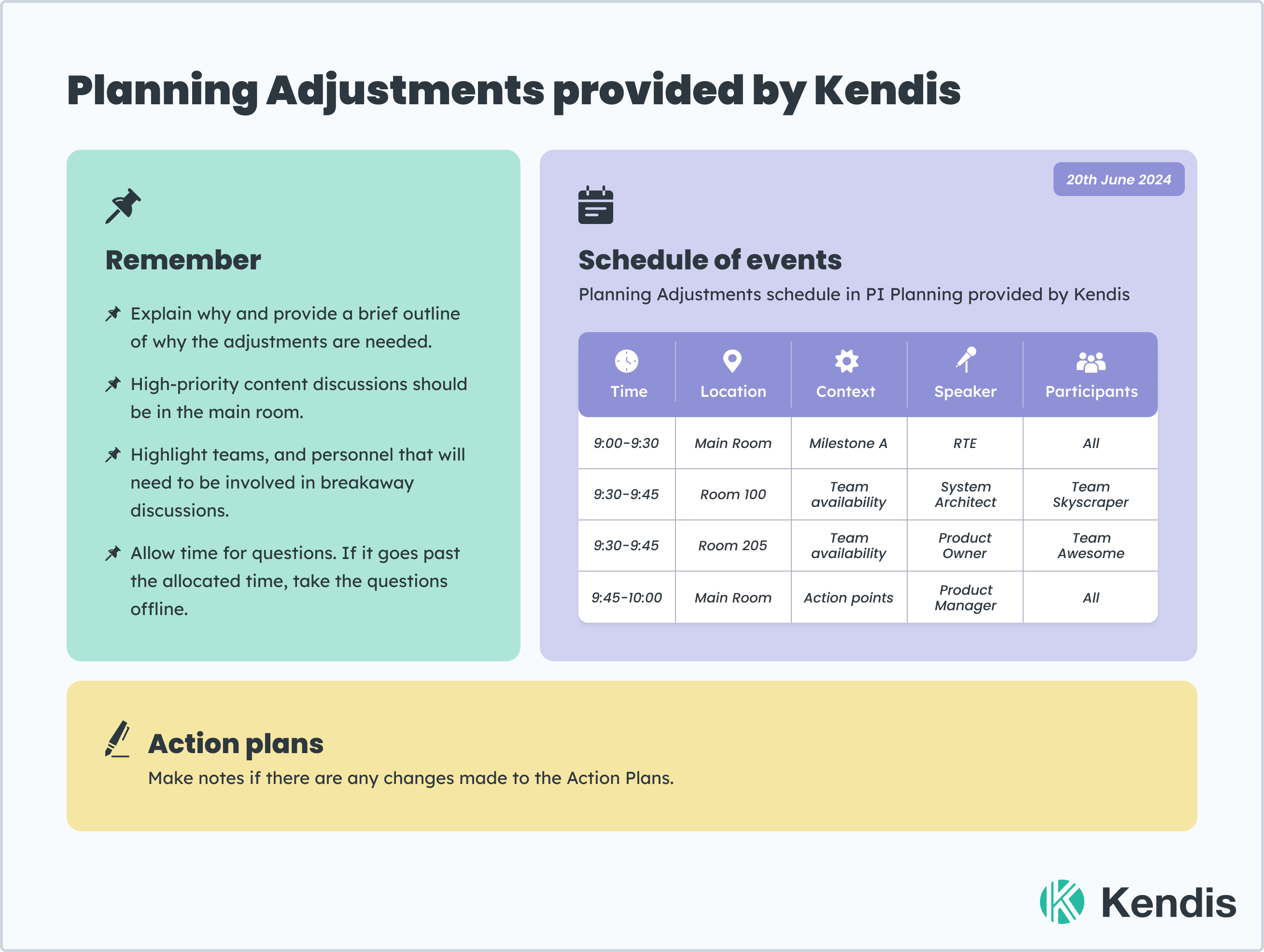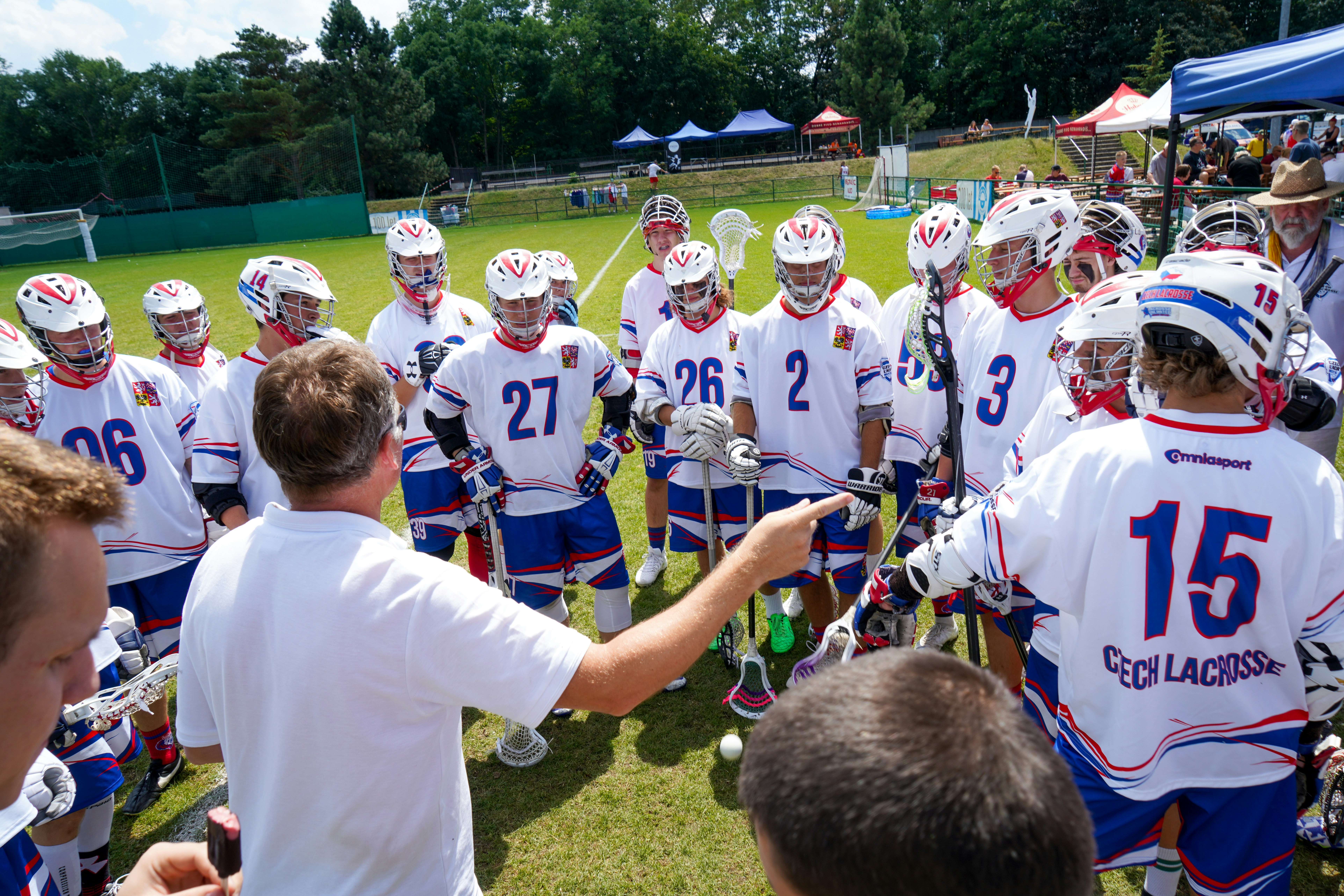Planning Adjustments take place after the Draft Plan or Management Review and are usually the first event of Day 2 if you are following the two-day SAFe PI Planning.
Contents
What are Planning Adjustments?
How are the Planning Adjustments Done?
How to Prepare for Planning Adjustments in 6 Steps?
Kendis Tips for Presenting Planning Adjustments
Scehdule for Planning Adjustments
What are Planning Adjustments?
Planning Adjustments are done to share any updates and communicate any high-level changes that may have been made to the scope, teams, or milestones discussed, during the Management Review meeting of PI Planning. This is facilitated but not necessarily presented by the RTE.
The duration is usually one hour depending on the topics of discussion, it can be shorter lasting a few minutes. If more time is needed than the allocated timeslot, consider setting up time with those involved to discuss the specific adjustments.
If there are no planning adjustments to be made, this time slot can be utilized for another discussion or act as a general time buffer.
How are the Planning Adjustments Done?
With the Release Train Engineer (RTE) leading the planning adjustments session, the focus is on discussing topics meant on the program level and adjustments needed —for example, any changes to Milestones, Scope, or Action Plans for highlighted Risks or Impediments should be raised.
If there are changes concerning the team level such as personnel or team members, it would be better to discuss them discreetly with the team and relevant managers and leads.
There might be various aspects of discussion during the Planning Adjustments so a specialist or a relevant person should talk about the issue being addressed. For example, the Product Manager may provide more insight if there is a problem with the Product or a Systems Architect can explain dependencies to the participants.
Keep discussions for the main room high level and discuss briefly; if more details are needed, arrange to discuss in smaller groups as required.
How to Prepare for Planning Adjustments in 6 Steps?
The following you sessions consists of Kendis’s list of recommended activities to help prepare for Planning Adjustments.
- A slide deck is not needed but if there are any changes made to previously presented slides in the preceding events, then those changes should be shared.
- Ask other participants involved in the adjustments who they would also like to attend
- Ensure that all the relevant participants are available during this timeslot
- RTE should prepare a timed schedule prior to this meeting as adjustments to several areas on the ART may need to be made
- If the session is remote, consider having breakout rooms for these discussions
- Have a structure to record any adjustments made
Kendis Tips for Presenting Planning Adjustments
Once you have prepared, you can ensure a seamless Planning Adjustments session on the day itself by following these tips:
- Present the schedule of events that need to be adjusted for all participants
- Highlight teams, and personnel that will need to be involved in breakaway discussions
- Briefly mention the problem and talk about “The why” that made it necessary for the adjustment to be made
- Invite the expert or impediment owner to discuss more in-depth if needed
- Discuss Action Plans that have been created to deal with other issues raised
- Make notes on the adjustments made, so that they can be shared later
- Allow time for questions. If it goes past the allocated time, consider taking the questions offline if not relevant to the majority
Below you will find an example of a schedule of the Planning Adjustments session.

It is common to have high-level changes communicated amongst senior-level individuals in various discussions and previous events and to have decisions made that may appear as a surprise for some of the team members. Considering the magnitude of PI Planning and the number of people involved, it is not out of the ordinary for these things to happen.
To learn more about Kendis, click here.









